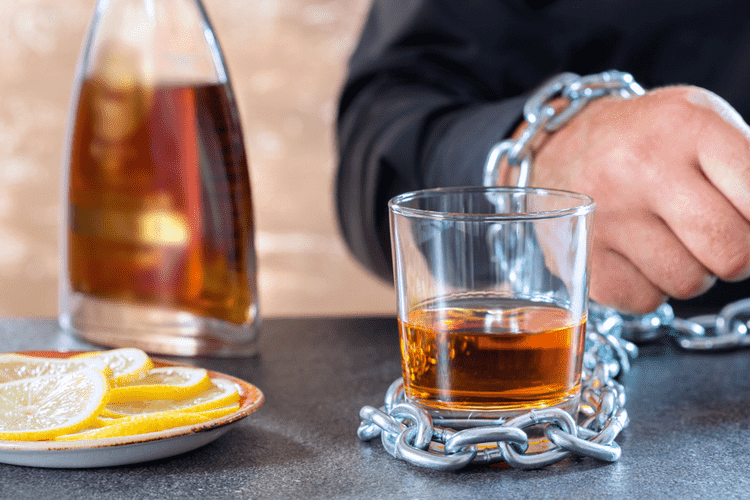“GLP-1 medications don’t just work on the stomach,” she said, “they touch every organ, from the heart to the brain. All patients were being treated with semaglutide, the active ingredient in GLP-1 drugs Ozempic and Wegovy, for weight loss. People with this disorder have a reduced ability to stop or control their drinking even though it is having negative effects on their lives. Inpatient treatment is provided in special units of hospitals or medical clinics.
Monday, December 4, 2023 – California Healthline
Monday, December 4, 2023.
Posted: Mon, 04 Dec 2023 14:49:02 GMT [source]
Treatment for poly-substance addiction is available on both an inpatient and outpatient basis. Frequent or regular use of both sedative sleeping pills and alcohol can result in even more severe, or complicated withdrawal when attempts are made to quit using them. In such instances, it is important that people trying to quit do so under the care of physician. Each patient was given an hour to complete the orientation package and was given the choice of completing the anonymous questionnaire for this study. Questionnaires were collected by the unit secretary and placed in a tamper-resistant box. Incomplete questionnaires (those with 3 or more questions left unanswered) were excluded from the analysis.
Mental Health Medications That Interact With Alcohol
John C. Umhau, MD, MPH, CPE is board-certified in addiction medicine and preventative medicine. For over 20 years Dr. Umhau was a senior clinical investigator at the National Institute on Alcohol Abuse and Alcoholism of the National Institutes of Health (NIH). This brochure describes the stages of recovery from alcohol and drug misuse, and what to expect after leaving detoxification services. According to the 2016 National Survey on Drug Use and Health, nearly 15.6 million Americans aged 12 or older struggle with alcohol addiction.

When you pick your prescription up at the pharmacy, chances are the label or package insert will come with a warning if it is not safe to consume alcohol while you are taking the medication. Narcan (naloxone hydrochloride) is an opioid agonist—a medication that can help counteract the effects of opioid medications such as morphine, oxycodone, and heroin. Naloxone can rapidly reverse opioid overdose by quickly restoring normal respiration to a person whose breathing has slowed or stopped due to mixing opioid pain medications with alcohol. Combining alcohol with medications used to treat hypertension (high blood pressure) can cause dizziness, fainting, drowsiness, and arrhythmia (irregular heartbeat). In some cases, a fatal overdose can occur if sleep aids are mixed with alcohol because both substances affect the body’s central nervous system (which controls your breathing, heart rate, and brain function).
Which Medications Can You Not Drink Alcohol With?
This might seem like an odd question, but it’s easy to forget that alcohol, while used socially for centuries, is a drug and can lead to side effects, drug interactions, alcoholism, and organ damage, such as cirrhosis of the liver. As reported by the National Institute on Alcohol Abuse and Alcoholism (NIAAA), a report showed that annually there were over 78,000 liver disease deaths among individuals ages 12 and older, and 47% involved alcohol. Add excessive use of alcohol to https://ecosoberhouse.com/article/alcohol-and-pills-what-are-the-effects-of-mixing/ the regular use of a medication that is hard on the liver, and the potential for harm can soar. However, even medications that don’t require a prescription can be unsafe when mixed with alcohol. For example, OTC painkillers (including nonsteroidal anti-inflammatory drugs) can cause a range of symptoms from gastrointestinal upset to bleeding and ulcers in the stomach to tachycardia (racing heart). One of the deadliest combinations is alcohol and narcotic pain medications.
- American Addiction Centers (AAC) is committed to delivering original, truthful, accurate, unbiased, and medically current information.
- In fact, this effect sometimes is exploited by mixing alcoholic beverages with BZDs, such as the rapid-acting flunitrazepam (Rohypnol® ), an agent implicated in date rape (Simmons and Cupp 1998).
- Future studies should explore which strategies can best minimize adverse consequences resulting from alcohol–drug interactions.
- Some medicines that you might never have suspected can react with alcohol, including many medications which can be purchased “over-the-counter”—that is, without a prescription.
- In addition to CYP2E1, at least two other cytochrome enzymes that metabolize various medications (i.e., CYP3A4 and CYP1A2) also can break down alcohol (Salmela et al. 1998).
- Another factor contributing to an increasing risk of medication-medication or alcohol-medication interactions is that many medications that previously were available only by prescription (e.g., H2RAs and NSAIDs) are gaining OTC status.
Sleep interruption from alcohol combined with the sedative effects of sleeping pills can create an intoxicated state during which an individual is consciously asleep while their body is awake. During this state, individuals may engage in risky behaviors without realizing it. Many individuals who use sleeping pills — both legitimately and recreationally — mix alcohol with the medications. It is often an accident the first time, as individuals who use sleeping pills on a nightly basis may not realize that mixing the two substances can cause mind altering effects and exacerbate the depressive effects each substance produces. Hints that these kinds of drugs could be used in the treatment of alcoholism go back even further.
Gastrointestinal Absorption and Metabolism
Moreover, the amounts of various enyzmes of the cytochrome CYP3A family (including CYP3A4) can increase from alcohol consumption (Niemela et al. 1998). Thus, potential interactions also exist between alcohol and medications metabolized by these cytochromes. In general, probably only a small fraction (perhaps 10 percent) of ingested alcohol is eliminated from the body by first-pass metabolism after consumption of low doses of alcohol. As alcohol ingestion increases, the amount of alcohol eliminated by first-pass metabolism becomes an even smaller fraction of the total amount of alcohol consumed.
When you mix alcohol with a blood pressure medication, for example vasodilators and alpha-blockers, you may experience orthostatic hypotension, which is low blood pressure that occurs when you stand up from a sitting or lying down position. Orthostatic hypotension https://ecosoberhouse.com/ can lead to a fall and possible injury and is a serious concern in older patients. As long as you are not taking medications that interact with alcohol, probably not. However, moderate to heavy drinkers should definitely consider breaking the habit.

